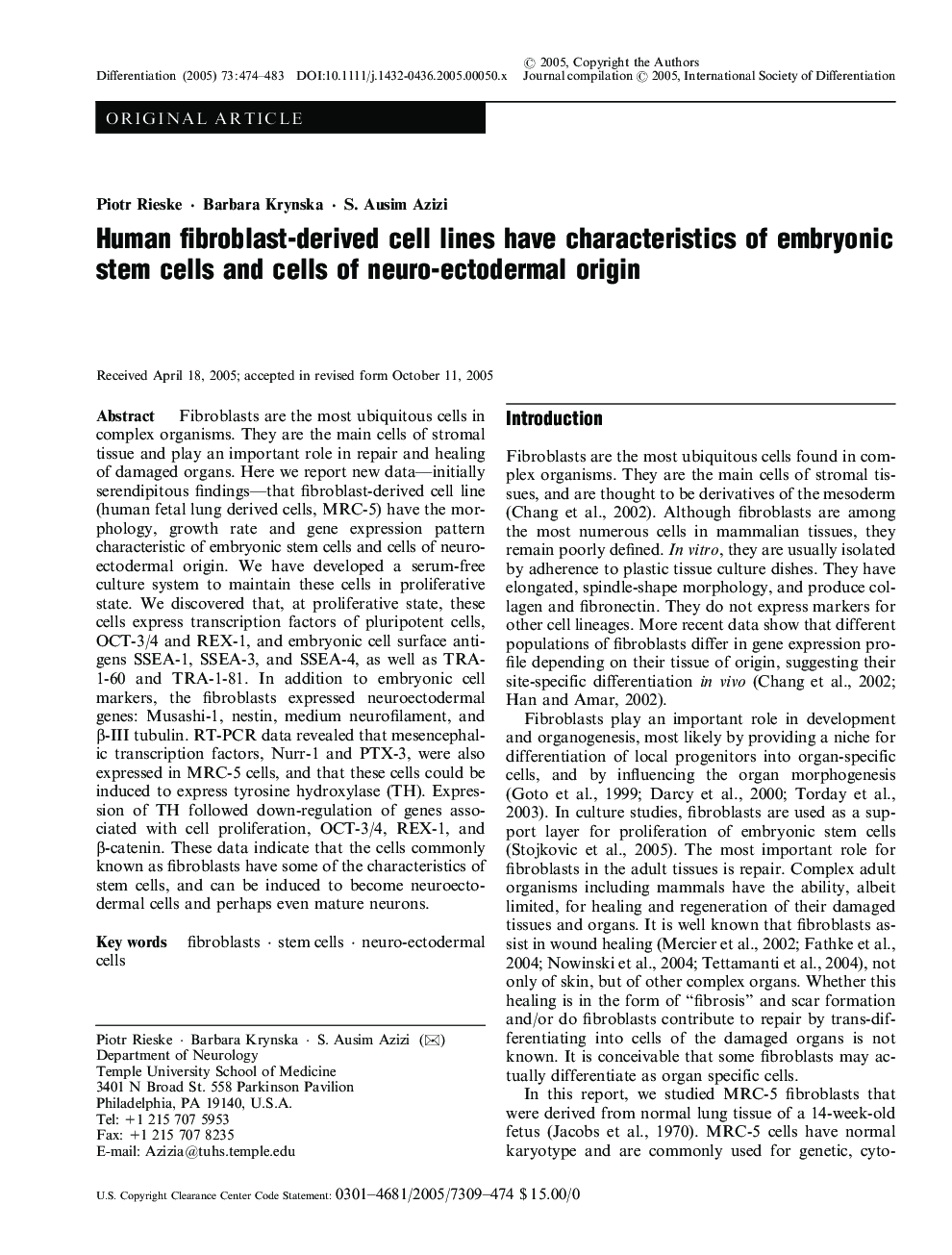| Article ID | Journal | Published Year | Pages | File Type |
|---|---|---|---|---|
| 9905513 | Differentiation | 2005 | 10 Pages |
Abstract
Fibroblasts are the most ubiquitous cells in complex organisms. They are the main cells of stromal tissue and play an important role in repair and healing of damaged organs. Here we report new data-initially serendipitous findings-that fibroblast-derived cell line (human fetal lung derived cells, MRC-5) have the morphology, growth rate and gene expression pattern characteristic of embryonic stem cells and cells of neuro-ectodermal origin. We have developed a serum-free culture system to maintain these cells in proliferative state. We discovered that, at proliferative state, these cells express transcription factors of pluripotent cells, OCT-3/4 and REX-1, and embryonic cell surface antigens SSEA-1, SSEA-3, and SSEA-4, as well as TRA-1-60 and TRA-1-81. In addition to embryonic cell markers, the fibroblasts expressed neuroectodermal genes: Musashi-1, nestin, medium neurofilament, and β-III tubulin. RT-PCR data revealed that mesencephalic transcription factors, Nurr-1 and PTX-3, were also expressed in MRC-5 cells, and that these cells could be induced to express tyrosine hydroxylase (TH). Expression of TH followed down-regulation of genes associated with cell proliferation, OCT-3/4, REX-1, and β-catenin. These data indicate that the cells commonly known as fibroblasts have some of the characteristics of stem cells, and can be induced to become neuroectodermal cells and perhaps even mature neurons.
Keywords
Related Topics
Life Sciences
Biochemistry, Genetics and Molecular Biology
Cancer Research
Authors
Piotr Rieske, Barbara Krynska, S. Ausim Azizi,
